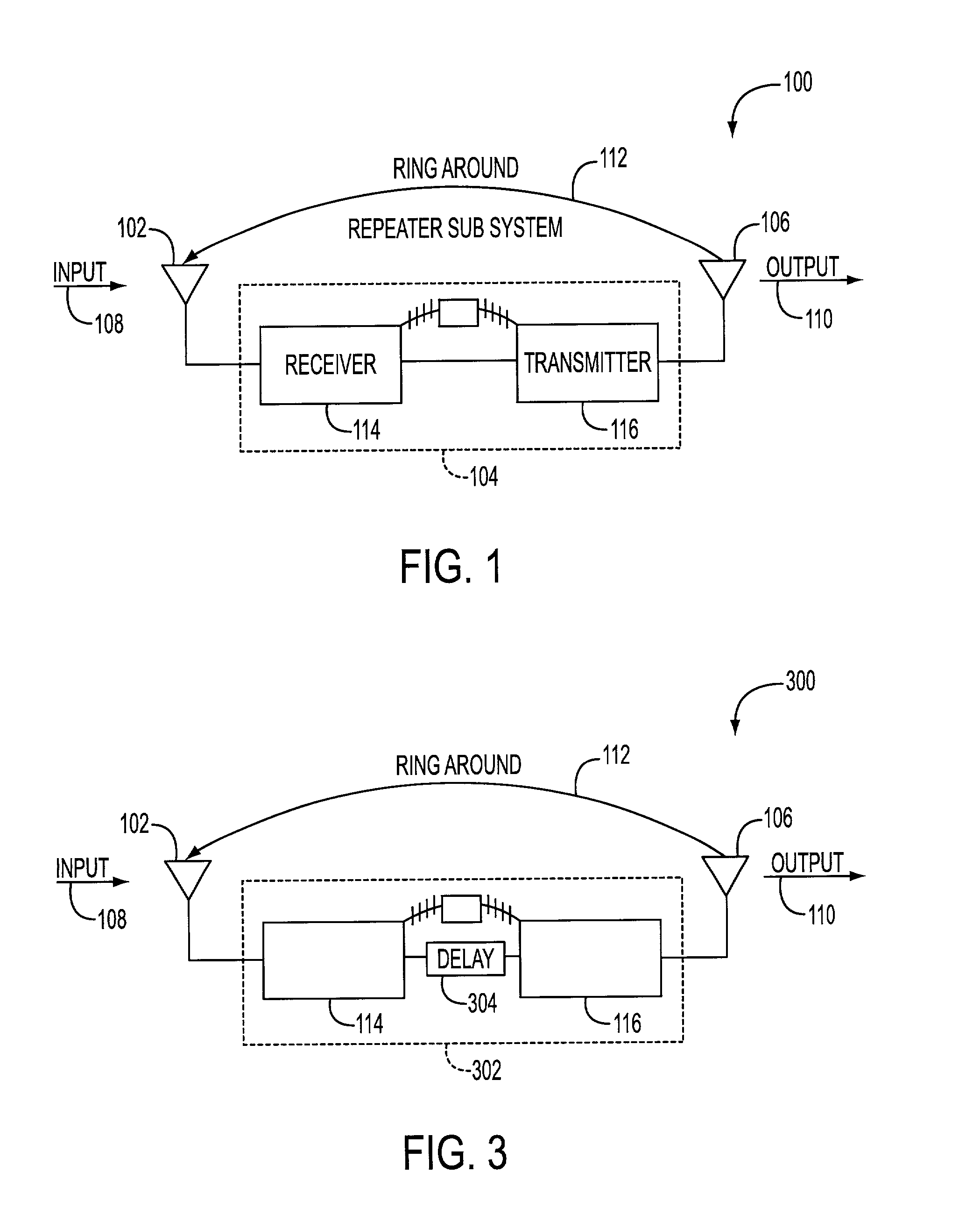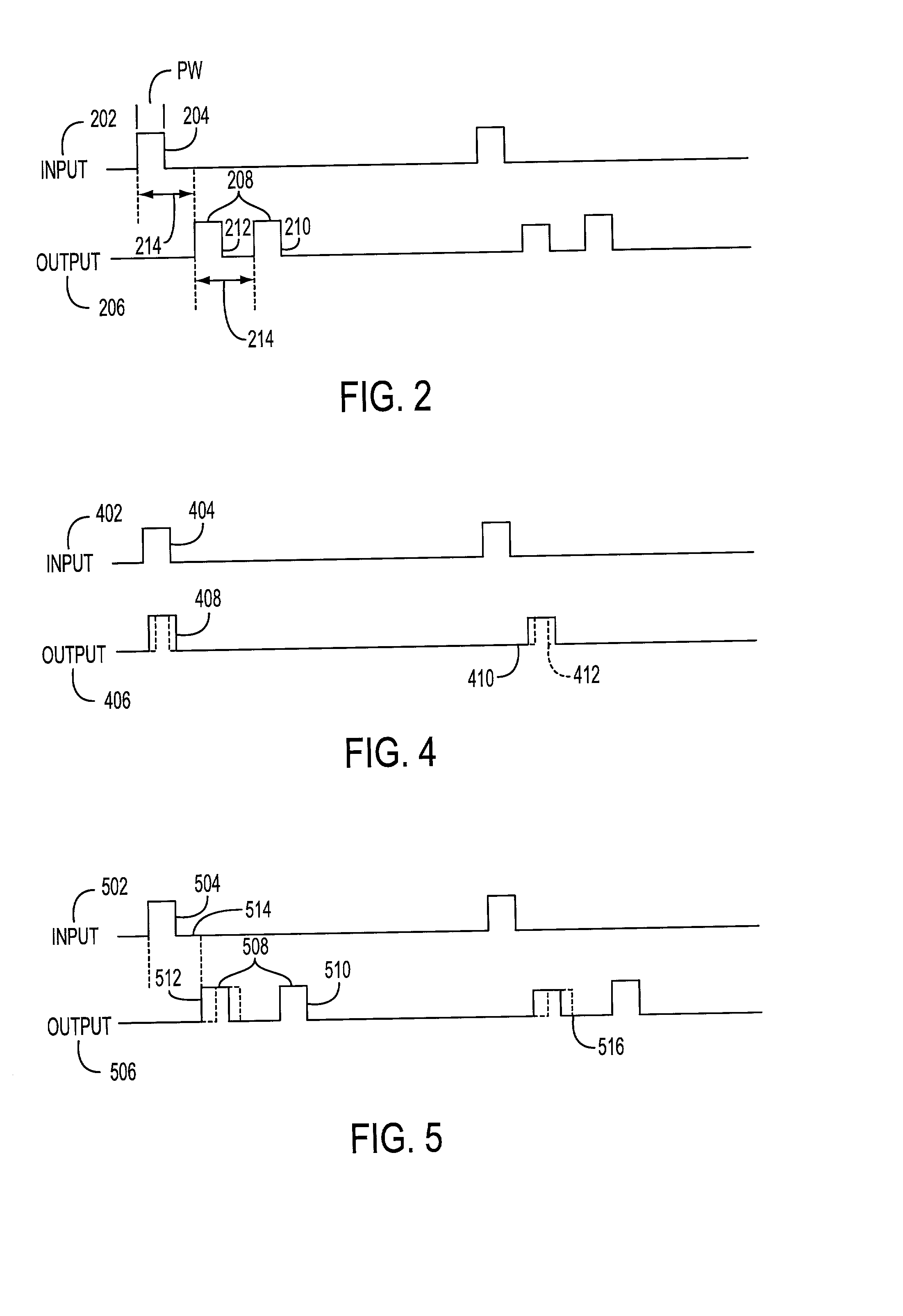Self calibration of transponder apparatus
a transponder and self-calibration technology, applied in the field of self-calibration, can solve the problems of limited procedure, direct measurement of such time intervals, and yield of measurements performed by different techniques
- Summary
- Abstract
- Description
- Claims
- Application Information
AI Technical Summary
Benefits of technology
Problems solved by technology
Method used
Image
Examples
Embodiment Construction
[0038] In the following description, for the purposes of explanation, numerous specific details are set forth in order to provide a more thorough understanding of the present invention. It will be apparent, however, to one skilled in the art that variations of the embodiments disclosed herein are possible.
[0039] FIG. 1 illustrates an exemplary embodiment of a transponder in accordance with the present invention. The transponder 100 includes a receiving antenna 102 for receiving input signals 108 from a radar (not shown), a repeater subsystem for processing the input signals 108, and an output antenna 106 for transmitting output signals 110 (i.e., return signals) back to the radar (not shown). In the exemplary embodiment, the repeater subsystem 104 includes a receiver 114 and a transmitter 116. It is noted that the repeater subsystem may take many various forms, or may be incorporated as part of a system. For the purposes of the present invention, the essential components of the repe...
PUM
 Login to View More
Login to View More Abstract
Description
Claims
Application Information
 Login to View More
Login to View More - R&D
- Intellectual Property
- Life Sciences
- Materials
- Tech Scout
- Unparalleled Data Quality
- Higher Quality Content
- 60% Fewer Hallucinations
Browse by: Latest US Patents, China's latest patents, Technical Efficacy Thesaurus, Application Domain, Technology Topic, Popular Technical Reports.
© 2025 PatSnap. All rights reserved.Legal|Privacy policy|Modern Slavery Act Transparency Statement|Sitemap|About US| Contact US: help@patsnap.com



